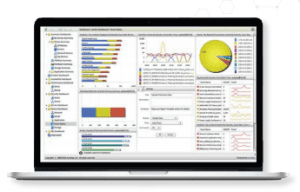 Are you constantly chasing down the latest threats, struggling to comply with ever-evolving regulatory compliance initiatives and fighting just to just gain an accurate picture of the data running across your network? Perhaps it’s time you considered adding a security information and event management (SIEM) system to your security platform.
Are you constantly chasing down the latest threats, struggling to comply with ever-evolving regulatory compliance initiatives and fighting just to just gain an accurate picture of the data running across your network? Perhaps it’s time you considered adding a security information and event management (SIEM) system to your security platform.
The idea behind SIEM is that it provides a bird’s eye view of an organization’s entire technology infrastructure, helping staffers better pinpoint and address issues before they reach criticality. At a high level, SIEMs take in logs and data from a variety of tools and applications, correlate them in real-time and present them in a way that gives staffers a clear, accurate picture of an entity’s security and compliance posture. When effectively implemented and managed, SIEMs enable organizations to:
- Protect data: Most security staffers know how difficult it is to manually correlate alerts across different security toolsets to determine whether a breach is, in fact, happening. SIEM helps automate and streamline the process, taking in all that data, normalizing it and correlating it to provide actual context, both historically and in real time. Its single-screen view of the whole network ensures that when suspicious anomalies occur, they can be detected, confirmed and dealt with quickly and efficiently, protecting data from even the stealthiest threats.
- Retain/prove compliance: Because it helps protect corporate data no matter where it resides on the network, SIEM is also a key component of a strong regulatory compliance program. Instead of constantly performing internal audits to validate and verify compliance requirements are being met, SIEM provides the requisite proof and assurance — not just at audit time, but all the time.
- Gain/maintain certifications: Organizations looking to achieve industry certifications like the ISO 27000-series, ITIL and COBIT know the time, expense and manpower required to gather requisite data, establish the right processes/procedures, attain certification and maintain it over time. SIEM helps ease the process by providing a holistic view of the environment end-to-end and tracking it over time — ensuring everyone is on the same page, procedures are standardized and certifications stay current.
- Validate policy enforcement and violations: Every security manager knows employees are the weakest link in their cyber-defense, but even the best security awareness training programs and policy enforcement programs can’t eliminate human error entirely. With a SIEM in place, staffers can correlate alerts from various systems to produce customized reports and uncover common policy violations. For example, many companies struggle with the issue of negligent employees stepping away from their PCs without locking their screens. A SIEM could correlate system and perimeter access controls to pinpoint users who leave the building without signing off first. SIEMS can also track such violations over time to identify chronic violations or repeat offenders that might require policy changes or extra training time.
Beware Set-And-Forget SIEM
It’s important to note: SIEM is not a set-it-and-forget-it proposition. Organizations must continually re-assess their environment, adjust inputs and build new use cases to ensure they align with their technology and business environment as it changes over time. A partner of Fortinet, maker of the industry-leading FortiSIEM, Xiologix can help you leverage the full capabilities of an advanced SIEM solution. Learn more.